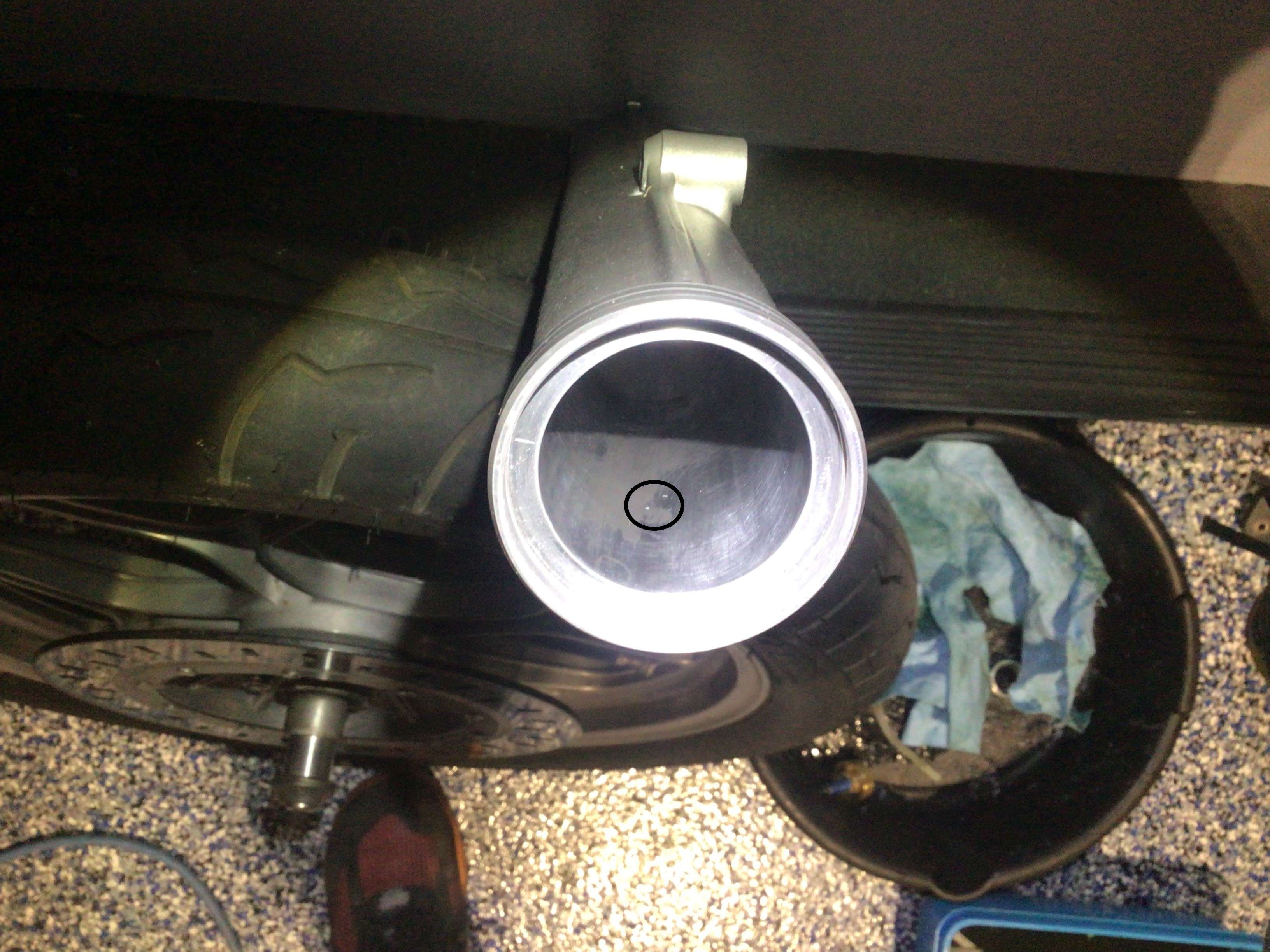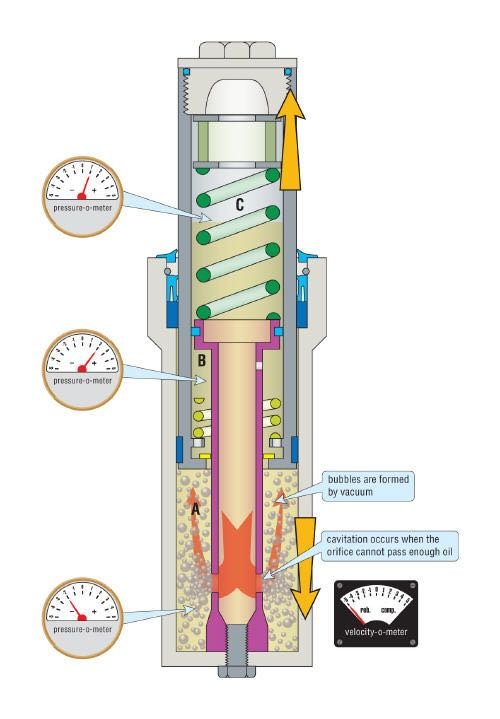mcmlcccvrs
New member
These marks you see in the black circle aren't scratches. They appear to be tiny pits about 40mm (to the lowest one) from the top of the slider. Corrosion? I can easily snag a tiny, flat-bladed screw driver on them which tells me it will scratch my stanchion and probably did, although I have dressed the stanchion with 600 grit emery cloth. I have tried removing them with 600 grit but it appears it's going to be more than a few passes with sandpaper to do this.
I believe they are high enough in the slider so that suspension travel with scratch the stanchion and that area will then pass by the fork seal, possibly/probably nicking the seal and causing it to leak.
I have no idea if they were there last winter when I upgraded my front forks with Race Tech emulators and springs but they could have easily been missed.
What do you guys think I should do-sand some more and try and get them out or look for a set of used fork tubes/stanchions? The latter wouldn't be hard to locate at all.

I believe they are high enough in the slider so that suspension travel with scratch the stanchion and that area will then pass by the fork seal, possibly/probably nicking the seal and causing it to leak.
I have no idea if they were there last winter when I upgraded my front forks with Race Tech emulators and springs but they could have easily been missed.
What do you guys think I should do-sand some more and try and get them out or look for a set of used fork tubes/stanchions? The latter wouldn't be hard to locate at all.




